You raise your hand and press a holographic button in mid-air. Somehow, you can “feel” the button pressing back on your finger, as if it were a physical device.
This is the disorientating effect of a demonstration at the Bristol HQ of Ultrahaptics, a hardware company that has raised more than $85m (£70m) in investment from backers including Neil Woodford and the Dolby family.
Haptic feedback, which creates the sensation of touch by applying force or vibration to its users, has been around for decades and is common in many devices today. It is what gives your smartphone’s touchscreen keyboard its “feel” with vibrations reacting to your fingers.
But Ultrahaptics is looking to revolutionise the technology with “mid-air” haptics that, until now, have been the preserve of films like Minority Report.
Hold your hand over one of Ultrahaptics’ pads and the device makes it feel as if there’s a small fan blowing air on a very specific part of your palm. However, rather than air, the effect is caused by specific patterns of high-frequency ultrasound emitting from the device.
Founded in 2013 by Bristol University student Tom Carter, the company is now valued at £150m and is using its patented tech to create advertising screens with “force field” experiences, as well as virtual reality video games.
Carter, 31, remains with the business as its chief technology officer. If his company is successful, Ultrahaptics could play a major role in the future of computing, as virtual and augmented reality become more popular and people look to ultrasound as a way to simulate the feeling of touch in VR.
There are signs that some of the world’s largest technology firms may agree. Apple debuted haptic feedback in its devices in 2015, and Google quietly bought British hardware firm Redux last year, which developed touchscreens with haptic technology.
Carmakers have been one of Ultrahaptics most regular customers, and their strict contracts mean Carter can’t speak about many of the projects that the company is working on. There have been some public signs of these partnerships, however. Jaguar Land Rover announced in 2015 that it was experimenting with Ultrahaptics’ tech.
The company has two offices in America, as well as its waterfront headquarters in Bristol, which sits between offices of Coutts and PwC. It began leasing an office in San Francisco in May when the firm announced that it had bought well-known Silicon Valley hardware business Leap Motion for $30m.
It is common for American tech firms to snap up British companies, but this deal was a relatively rare example of a prominent British firm buying Silicon Valley tech.
It means that Ultrahaptics now owns Leap Motion’s sensor business, which allows it to track where people’s hands are above its sensors.
Leap Motion had at one point been valued at $300m and the firm is reported to have turned down multiple bids from Apple. But the company struggled to find a market for its hardware and Ultrahaptics ended up acquiring the firm.
It was a significant moment for the company. The purchase of the US firm was the latest stage of a journey that started when Microsoft released its Kinect motion-tracking camera for the Xbox video game console in 2010.
Carter, who was studying for his degree in computer science at Bristol at the time, says he played motion-controlled video games and “watched flatmates jump up and down”.
The tech worked well when tracking people’s movements in games, but often players struggled to touch virtual menu buttons due to the lack of feedback. It was “funny and frustrating,” Carter says, so he decided to start a research project creating the sensation of touch using ultrasound.
“I had spent three years working very hard on my degree and thought it was a great way to throw it all away chasing a crazy idea, so decided to give it a go,” he recalls.
He continued to tinker with the technology during his PhD studies, and eventually founded Ultrahaptics alongside Prof Sriram Subramanian and Benjamin Long, using their own money to fund the firm.
In 2015, the firm met with investors with the target of raising £5m in funding. That all changed following a meeting with investment fund manager Neil Woodford.
Woodford encouraged Ultrahaptics to increase its fundraising target, and Carter recalls a “fun” meeting with the fund manager. “He was like: ‘no, no, more,’” Carter says.
The company eventually closed the round at over £10m, doubling its original goal. Woodford acquired a 20pc stake in the business, but sold his shares earlier this year after he began to face criticism for the level of his illiquid investments in unlisted firms.
Since Woodford’s backing, Ultrahaptics has found a wide range of potential customers for its technology. Some ideas are “really absolutely crazy”, Carter says, describing a research project that uses Ultrahaptics for targeted drug delivery, turning on tiny robots using ultrasound as they travel through the bloodstream.
Carter is also keen to use mid-air tech to replace touchscreens in public places such as hospitals to stop the spread of superbugs.
Have any Silicon Valley firms come knocking on Ultrahaptics’ door, keen to snap up the British firm? Carter smiles before reciting a practised line: “We are focused on growing the company to be as big as it possibly can be.”
This article, by James Cook, first appeared in the Daily Telegraph on 19 August 2019

